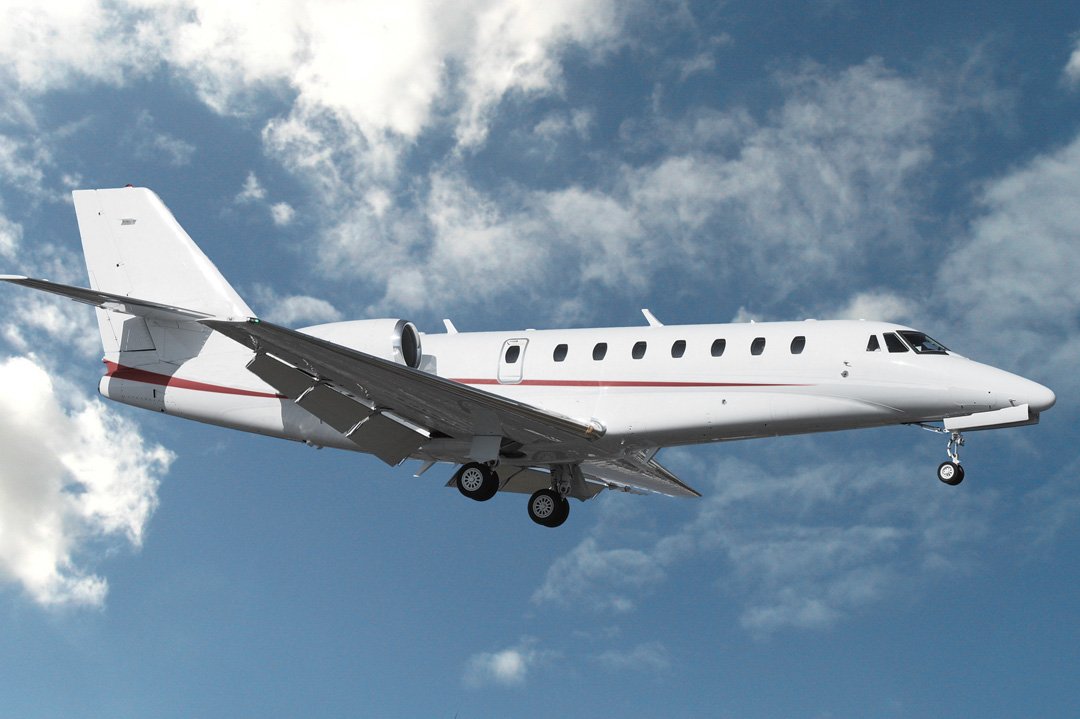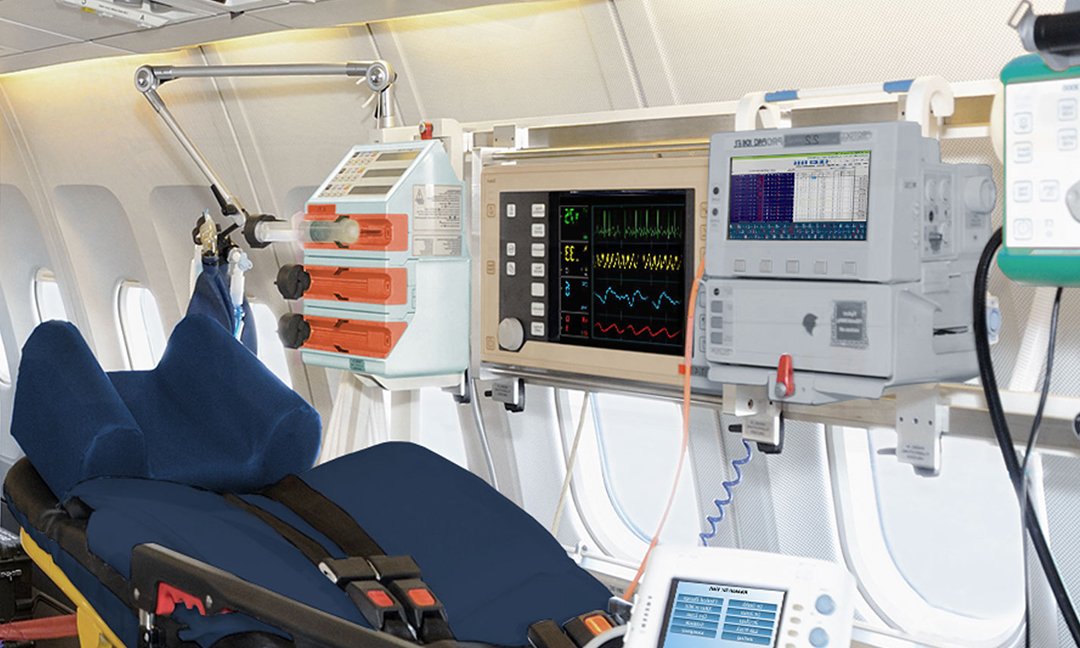Reading Time: 4 minutes
Table of contents
- Is it safe to fly long distances with heart disease?
- Traveling with heart disease: what are the dangers of commercial flights?
- When is commercial air travel inadvisable?
- Air travel checklist for patients with heart disease
- US air ambulance for Americans with heart disease: your safe option
- Contact us for a free quote for air ambulances for heart disease patients
In the United States, 1 person dies every 34 seconds from heart disease, accounting for 1 in every 5 deaths. High blood pressure, high cholesterol, and smoking are all risk factors for cardiovascular disease. Being overweight, unhealthy diets, physical inactivity, and excessive alcohol consumption also increase Americans’ chances of developing heart and circulatory conditions.
The key points to remember about flying long distances with heart disease:
- Passengers with heart disease or circulatory problems are urged to take extra precautions before flying.
- Long-distance travel can cause deep vein thrombosis and hypoxia, exacerbating symptoms like headaches, shortness of breath, and angina.
- Traveling to and from the United States in a dedicated air ambulance reduces the risk of heart problems and in-flight medical emergencies.
Is it safe to fly long distances with heart disease?
Heart failure, heart attack, and stroke are the leading causes of death in the United States. These heart conditions affect people of all ages, but they are more common in those over the age of 70.

The good news is that most Americans with a stable heart or circulatory condition can fly without putting their health at risk. There is no reason for them to avoid international travel as long as their condition is under control and their doctor has cleared them to fly long distances.
Passengers with heart disease, on the other hand, should exercise caution before boarding an airplane, especially if they have recently had a heart attack, heart surgery, or have been hospitalized due to their heart condition.
Traveling with heart disease: what are the dangers of commercial flights?
Have you recently been diagnosed with, or had treatment for a heart disease or circulatory condition? It is best to postpone your vacation until you have fully recovered. This is because air travel puts passengers with heart disease at risk. Indeed, although the probability of arrhythmia, angina and heart attack is low in people with stable heart disease, heart-related issues still account for a significant proportion of on-board medical emergencies.
One of the most serious risks for passengers with heart disease when flying is venous thrombosis, or the formation of a blood clot in the veins of the arms, legs, or pelvis. Long periods of cramped sitting, dehydration, and the lower oxygen levels in a plane cabin can all predispose to blood clots. Flights of more than eight hours are the most dangerous. The risk of venous thromboembolism also increases in travelers with peripheral artery disease (PAD) or a history of heart failure.
High altitudes increase the risk further, as the higher you go above sea level, the less oxygen there is in the air. This means that your blood will carry less oxygen. This can result in headaches, extreme shortness of breath, or angina symptoms. As a result of the lower cabin air pressure, passengers with coronary heart disease or heart failure may require additional in-flight oxygen.
Last but not least, stress and anxiety are more common in heart disease patients. Both have been linked to an increased risk of adverse cardiac events and cardiac arrest, particularly in patients with a recent acute heart attack (myocardial infarction).
When is commercial air travel inadvisable?
Air travel is not advised within two weeks of a heart attack with no complications. If a patient has had an angioplasty, a one-week waiting period is recommended before flying. The period immediately following the stent insertion is fraught with the risk of clot formation. Flying during this time would exacerbate the risk.

Air travel checklist for patients with heart disease
Even if you have a heart disease or a circulatory condition, going on vacation should be a pleasurable experience that allows you to unwind, rest and relax. You may also want to travel outside of the United States to receive better or more affordable treatment. In any case, here are some helpful hints and tips for travelers to consider when planning a holiday with a heart condition:
Before the trip:
- Make plans for a relaxing vacation
- Purchase adequate travel insurance
- Choose a location that is convenient and close to amenities
- Make a list of emergency numbers and how to get medical help once arrived
- Carry a letter from your doctor explaining your condition and any medical devices you may be using (pacemaker or implantable cardioverter defibrillator)
- If you use oxygen or a portable oxygen concentrator, obtain your airline’s approval at least three weeks before your trip
- If you require assistance with your luggage or transportation within the airport terminal, contact the airline ahead of time to arrange for mobility assistance, such as a wheelchair.
During the trip:
- Carry medications in your hand luggage
- Wear compression socks during your flight or other long-distance travel
- The smartest way of avoiding the formation of blood clots is to limit your sitting time by doing leg exercises or walking from the front to the back of the cabin.
US air ambulance for Americans with heart disease: your safe option
Has your health deteriorated in France? Did you have a heart attack in the United Kingdom? It is a wise decision to return to the United States, where you are covered by Medicare, are closer to your family and cardiologist, and can receive the necessary treatment.
You can return to the United States safely and with peace of mind with our ambulance flights. Our aircraft are outfitted with cutting-edge medical technology, making them ideal for long-distance travel. They have the same equipment as a modern intensive care unit and are staffed by a multidisciplinary medical team that includes cardiologists and other health specialists.

To name a few examples, we can conduct a "sea level" flight to mitigate the risks associated with changes in atmospheric pressure. Patients with heart disease and underlying health issues that make them susceptible to hypoxia can thus travel with complete confidence.
Did you test positive for Covid-19 during your trip? We will also plan your US medical repatriation. You can fly alone in a private jet if you are symptom-free. Otherwise, we will transport you in a sophisticated isolation unit, while meeting any containment requirements.
Finally, if you choose our bed-to-bed transfer service, a medically staffed and equipped ground ambulance will transport you from your hotel/hospital to the nearest airport. When you arrive in the United States, an ambulance will again pick you up from the airport and transport you to your home or a suitable care facility. This speeds up and simplifies ground transportation.
Contact us for a free quote for air ambulances for heart disease patients
Are you looking for a US air ambulance service to arrange long-distance patient transportation? Get in touch with our multilingual team so we can advise you on the best mode of transportation for your needs. Our helpful experts will respond as soon as possible to provide you with a free, non-binding quick estimate for your trip.
Get in touch now